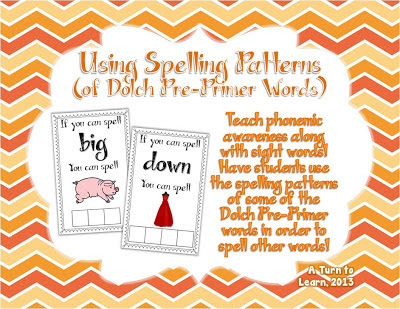Spring MVC - @RequestBody and @ResponseBody demystified
In this post i want to dig into spring mvc a little, revealing what happens behind the scenes when a request is converted to your parameter object and vice versa. Before we start, i want to explain the purpose of these annotations.
They are annotations of the spring mvc framework and can be used in a controller to implement smart object serialization and deserialization. They help you avoid boilerplate code by extracting the logic of messageconversion and making it an aspect. Other than that they help you support multiple formats for a single REST resource without duplication of code. If you annotate a method with @ResponseBody, spring will try to convert its return value and write it to the http response automatically. If you annotate a methods parameter with @RequestBody, spring will try to convert the content of the incoming request body to your parameter object on the fly.
Here is an example
Depending on your configuration, spring has a list of HttpMessageConverters registered in the background. A HttpMessageConverters responsibility is to convert the request body to a specific class and back to the response body again, depending on a predefined mime type. Every time an issued request is hitting a @RequestBody or @ResponseBody annotation spring loops through all registered HttpMessageConverters seeking for the first that fits the given mime type and class and then uses it for the actual conversion.
By adding @EnableWebMvc respectively <mvc:annotation-driven />, spring registers a bunch of predefined messageconverters for JSON/XML and so on. You can add a custom converter like the following
In this example i've written a converter that handles the conversion of a BookCase, which is basically a List of Books. The converter is able to convert csv content to a BookCase and vice versa. I used opencsv to parse the text.
Here is the model
and the actual converter
1.)
Thanks to the design of spring mvc, which is following the single responsibility principle, our controller stays thin. We don't have to add a single line if we want to support new media types.
What are @RequestBody and @ResponseBody for?
They are annotations of the spring mvc framework and can be used in a controller to implement smart object serialization and deserialization. They help you avoid boilerplate code by extracting the logic of messageconversion and making it an aspect. Other than that they help you support multiple formats for a single REST resource without duplication of code. If you annotate a method with @ResponseBody, spring will try to convert its return value and write it to the http response automatically. If you annotate a methods parameter with @RequestBody, spring will try to convert the content of the incoming request body to your parameter object on the fly.
Here is an example
@Controller
@RequestMapping(value = "/bookcase")
public class BookCaseController {
private BookCase bookCase;
@RequestMapping(method = RequestMethod.GET)
@ResponseBody
public BookCase getBookCase() {
return this.bookCase;
}
@RequestMapping(method = RequestMethod.PUT)
@ResponseStatus(HttpStatus.NO_CONTENT)
public void setBookCase(@RequestBody BookCase bookCase) {
this.bookCase = bookCase;
}
}
So what is Spring doing behind the scenes when we are using those Annotations?
Depending on your configuration, spring has a list of HttpMessageConverters registered in the background. A HttpMessageConverters responsibility is to convert the request body to a specific class and back to the response body again, depending on a predefined mime type. Every time an issued request is hitting a @RequestBody or @ResponseBody annotation spring loops through all registered HttpMessageConverters seeking for the first that fits the given mime type and class and then uses it for the actual conversion.
How can i add a custom HttpMessageConverter?
By adding @EnableWebMvc respectively <mvc:annotation-driven />, spring registers a bunch of predefined messageconverters for JSON/XML and so on. You can add a custom converter like the following
@Configuration
@EnableWebMvc
@ComponentScan
public class WebConfiguration extends WebMvcConfigurerAdapter {
@Override
public void configureMessageConverters(List<HttpMessageConverter<?>> httpMessageConverters) {
httpMessageConverters.add(new BookCaseMessageConverter(new MediaType("text", "csv")));
}
}
In this example i've written a converter that handles the conversion of a BookCase, which is basically a List of Books. The converter is able to convert csv content to a BookCase and vice versa. I used opencsv to parse the text.
Here is the model
public class Book {
private String isbn;
private String title;
public Book(String isbn, String title) {
this.isbn = isbn;
this.title = title;
}
// ...
}
public class BookCase extends ArrayList<Book> {
public BookCase() {
}
public BookCase(Collection<? extends Book> c) {
super(c);
}
}
and the actual converter
public class BookCaseMessageConverter extends AbstractHttpMessageConverter<BookCase> {
public BookCaseMessageConverter() {
}
public BookCaseMessageConverter(MediaType supportedMediaType) {
super(supportedMediaType);
}
public BookCaseMessageConverter(MediaType... supportedMediaTypes) {
super(supportedMediaTypes);
}
@Override
protected boolean supports(Class<?> clazz) {
return BookCase.class.equals(clazz);
}
@Override
protected BookCase readInternal(Class<? extends BookCase> clazz, HttpInputMessage httpInputMessage) throws IOException, HttpMessageNotReadableException {
CSVReader reader = new CSVReader(new InputStreamReader(httpInputMessage.getBody()));
List<String[]> rows = reader.readAll();
BookCase bookCase = new BookCase();
for (String[] row : rows) {
bookCase.add(new Book(row[0], row[1]));
}
return bookCase;
}
@Override
protected void writeInternal(BookCase books, HttpOutputMessage httpOutputMessage) throws IOException, HttpMessageNotWritableException {
CSVWriter writer = new CSVWriter(new OutputStreamWriter(httpOutputMessage.getBody()));
for (Book book : books) {
writer.writeNext(new String[]{book.getIsbn(), book.getTitle()});
}
writer.close();
}
}
The Result
We can now issue text/csv requests to our Resource along with application/json and xml which are basically supported out of the box.1.)
PUT /bookcase2.)
Content-Type: text/csv
"123","Spring in Action"
"456","Clean Code"
Response
204 No Content
GET /bookcase
Accept: text/csv
Response
200 OK
"123","Spring in Action"
"456","Clean Code"
Thanks to the design of spring mvc, which is following the single responsibility principle, our controller stays thin. We don't have to add a single line if we want to support new media types.

Comments
Post a Comment